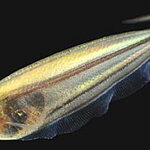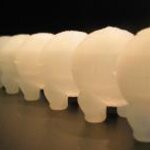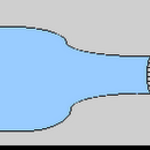Applied Physics

Scientists have long struggled to figure out how the brain guides the complex movement of our limbs, from the graceful leaps of ballerinas to the simple, everyday act of picking up a cup of coffee. Using tools from robotics and neuroscience, two Johns Hopkins University researchers have found some tantalizing clues in an unlikely mode of motion: the undulations of tropical fish.
The fish is a glass knifefish, which was used in the research. It is native to South America.
Photo by Will Kirk/HIPS
Their findings, published in the January 31 issue of the Journal of Neuroscience, shed new light…

British Petroleum announced today that it has selected the University of California, Berkeley, in partnership with Lawrence Berkeley National Laboratory (LBNL) and the University of Illinois at Urbana-Champaign, to lead an unprecedented $500 million research effort to develop new sources of energy and reduce the impact of energy consumption on the environment.
The funding will create the Energy Biosciences Institute (EBI), which initially will focus its research on biotechnology to produce biofuels — that is, turning plants and plant materials, including corn, field waste, switchgrass and…

A team of researchers at the University of California, Santa Barbara led by Shuji Nakamura, winner of the 2006 Millennium Technology Prize, has reported a major breakthrough in laser diode development.
The photograph shows the far-field pattern of the world's first gallium nitride (GaN) nonpolar blue-violet laser diodes. The bright spots illustrate clear lasing modes. (Credit: UCSB Solid State Lighting and Display Center)
The researchers, from the Solid State Lighting and Display Center in UCSB's College of Engineering, have achieved lasing operation in nonpolar gallium nitride (GaN)…

While robots have moved from the realm of science fiction to a myriad of real-life uses, the potential of the "hard-bodied" robots of the 21st century remains limited by their stiff construction and lack of flexibility. A group of researchers at Tufts University has launched a multidisciplinary initiative focused on the science and engineering of a new class of robots that are completely soft-bodied. These devices will make possible advances in such far flung arenas as medicine and space exploration.
Current prototype of a soft-bodied robot (Softbot), built from a silicone elastomer. It has…

Bioengineering researchers at UC San Diego have painstakingly assembled a virtual human metabolic network that will give researchers a new way to hunt for better treatments for hundreds of human metabolic disorders, from diabetes to high levels of cholesterol in the blood. This first-of-its-kind metabolic network builds on the sequencing of the human genome and contains more than 3,300 known human biochemical transformations that have been documented during 50 years of research worldwide.
In a report in the Proceedings of the National Academy of Sciences (PNAS) made available on the journal…

National Hockey League players will stay cool on the ice thanks to research at Central Michigan University.
Central Michigan University researchers captured this image of a hockey uniform using a thermal camera and body scanner during last year's testing of materials for new National Hockey League uniforms. (Image courtesy of Central Michigan University)
Last spring, CMU researchers performed thermal testing of three prototype NHL uniforms -- one of which the league unveiled Monday as its new lighter, cooler uniform.
The research was crucial to help Reebok, the uniform's designer, determine…

It's a mystery why the speed and complexity of evolution appear to increase with time. For example, the fossil record indicates that single-celled life first appeared about 3.5 billion years ago, and it then took about 2.5 billion more years for multi-cellular life to evolve. That leaves just a billion years or so for the evolution of the diverse menagerie of plants, mammals, insects, birds and other species that populate the earth.
New studies by Rice University scientists suggest a possible answer; the speed of evolution has increased over time because bacteria and viruses constantly…

Carnegie Mellon University Chemical Engineers have devised a new process that can improve the efficiency of ethanol production, a major component in making biofuels a significant part of the U.S. energy supply.
Carnegie Mellon researchers have used advanced process design methods combined with mathematical optimization techniques to reduce the operating costs of corn-based bio-ethanol plants by more than 60 percent.
The key to the Carnegie Mellon strategy involves redesigning the distillation process by using a multi-column system together with a network for energy recovery that ultimately…

Daniel Bernoulli was never a mom. He might have been a father, a fantastic one at that, I don't actually know. But that's not why I know of him. Bernoulli was a mathematician and scientist from the 1700's, and I was introduced to him during my fluid dynamics class in college.
Bernoulli had a lot of time on his hands (another reason why I know he wasn't a mom), or at least enough time to develop theories and equations to describe fluid flow. To sum his findings up quickly, Bernoulli's equation states that as the speed of a fluid flow increases, its pressure decreases. And in related news, as…

"Green" laundry detergents have taken the leading role in a new effort by retailers and industry to market mainstream, environmentally friendly consumer products, according to an article scheduled for the Jan. 29 issue of ACS' weekly newsmagazine, Chemical & Engineering News.
In the article, assistant managing editor Michael McCoy describes how the cleaning products industry has embraced sustainability, with a variety of innovations. One, for instance, is an energy-efficient laundry detergent that cleans without hot water. Others are laundry detergents that cause less water pollution…